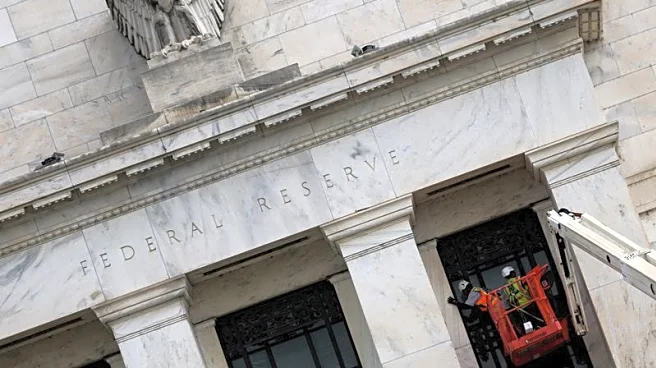(Reuters) -A jump in U.S. wholesale prices last month looks to have all but erased the possibility that the Federal Reserve will deliver a jumbo-sized half-point interest-rate cut in September, though expectations for a quarter-point cut next month, followed by another in October, remain intact.
U.S. producer prices increased a more-than-expected 0.9% in July from June amid a surge in the costs of goods but also of services like machinery and equipment wholesaling, the Labor Department's Bureau of Labor Statistics
said on Thursday. The increase may get passed on to consumers, who so far have not experienced a strong overall increase in prices even as the Trump administration has ratcheted up tariffs.
"We expect a stronger pass-through of levies into consumer prices in coming months with inflation likely to climb modestly over the second half of 2025," Nationwide Senior Economist Ben Ayers said.
The rise in services inflation will be particularly worrisome to Fed policymakers like Chicago Fed President Austan Goolsbee, who said on Wednesday that he's on alert for signs that inflation is seeping into prices beyond those for goods affected directly by tariffs. An increase in services inflation, also evident in the consumer price data released on Wednesday, suggests that inflation could become more of a persistent problem, he said.
U.S. Treasury Secretary Scott Bessent, who is leading the search for a replacement for Fed Chair Jerome Powell, has been pushing for a bigger rate cut next month, citing tame inflation, though on Thursday he said the Fed could start with a quarter-point move.
Before the data, traders put about a 3% probability on the idea of a half-point rate cut, with most bets firmly on a quarter-point cut. After the data, traders erased bets on a 50-basis-point reduction in rates.
San Francisco Fed President Mary Daly, who signaled earlier this week that she is increasingly open to the idea of a rate cut given the softening in the labor market, told the Wall Street Journal in a story published on Thursday that a 50-basis-point rate cut would signal an urgency about the job market that she does not feel.
(Reporting by Ann Saphir; Editing by Tomasz Janowski and Andrea Ricci)

